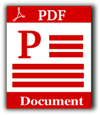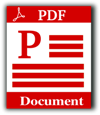Back to: Basic Grammar
To clear up some confusion: This is sometimes referred to as the 'Present Progressive'
This is the American version. The meanings are the same.
![]() This colour will introduce 'present participles'. These are used to form continuous verbs along with the verb 'to be'.
This colour will introduce 'present participles'. These are used to form continuous verbs along with the verb 'to be'.
Present participles end in -ing. They follow the verb 'to be' (is, are, am).
The definition of the the present continuous is as follows:
1. To talk about an action which is happening now.
2. To talk about an action which happens over a period of time but is not happening all the time.
3. To talk about a temporary action, which will finish soon.
4. To talk about habits/consistent things.
1. - To talk about things happening now.
He is eating lunch.
They are relaxing at home.
We are driving home from work.
All of these actions are happening as we speak. We can see them happening or we know that they are happening.
2.- To talk about an action which is happening over a period of time but is not happening all the time.
I am learning to play the guitar.
He is studying at university.
They are building their own house.
For these actions, the people doing the actions will not be doing them 24-hours a day. They will also be; sleeping, eating, resting, working.....
3. - To talk about temporary actions which will finish soon.
The sun is setting.
My friend is staying in a hotel.
The garage is fixing my car.
4. -To talk about habits/consistent things.
He is always biting his nails.
She is constantly making mistakes at work.
Some politicians are always lying to the public.
Structure
The structure for the present continuous is:
Subject Verb Present participle (statements)
He is sleeping.
They are talking.
New York is exciting.
Negative sentences.
He isn't sleeping.
They aren't talking.
New York isn't exciting.
Closed Questions.
Is he sleeping?
Are they talking?
Is New York exciting?
Open questions.
Where is he going?
What is he doing?
Where are they working?
Different uses for the verb + ing structure.
We also use this structure when talking about things which provide 'emotions/feelings' to us.
eg:
Skydiving is exhilarating. (as we can see here 'Skydiving is a noun, and exhilarating is an adjective, even though they have the same spelling)
Horror movies are terrifying.
Heavy traffic is frustrating.
The examples above show the -ing being used as an 'adjective' (this is covered in another lesson), so even though the sentence structure is the same, the word names are sometimes different.
For the Present continuous tense, the -ING word is a PRESENT PARTICIPLE.
Study the worksheet below and complete the exercises. Then we are going to look at another use of the tense.
We can also use the present continuous tense to talk about the future.
To recap, let us look at how we usually use the future tense.
I will go shopping later. - Here we use the simple future tense with 'will' ('sureness' in this example).
I am going to go to university after I finish high school. (A plan with 'be going to').
These are the 2 main ways in which we can talk about the future, but in everyday English speaking by native speakers, we also use the present continuous tense.
'Imagine' - it is 10am in the morning.
Peter says to Steve
Peter -"What are you doing today?" ("What are you going to do today?")
Steve - "I am going to work at 2pm, then I am going to the late night movie at 11pm"
As you can see here, we use this tense because it is easier than using 'be going to'.
What this does is shorten the sentence (which we native speakers like to do).
Compare:
Steve -"I am going to go to work at 2pm, then I am going to go to the late night movie at 11pm"
Steve - "I am working at 2pm, then I am going to the late night movie at 11pm"
We also use this for negative sentences and questions.

This is the end of the lesson.
Thank you.

